When Virtues Are Out of Balance
How a civilisation that sneers at masculine virtue ends up sneering at its own survival
If you believe in the importance of free speech, subscribe to support uncensored, fearless writing—the more people who pay, the more time I can devote to this. Free speech matters. I am a university professor suspended because of a free speech issue, so I am not speaking from the bleachers. Actually, as of August 2025, I was fired. I wasn’t just being pessimistic.
Please subscribe to receive at least three pieces /essays per week with open comments. It’s $6 per month, less than USD 4. Everyone says, "Hey, it’s just a cup of coffee," but please choose my coffee when you come to the Substack counter. Cheers.
Trump’s return to the White House was not, as the bien-pensant narrators insist, a glitch in the software of history. It was a very loud patch update. Enough voters finally tired of being told that the vocabulary of ordinary adulthood—duty, resilience, forthrightness—was a species of heresy, and they reached for the one candidate who made a point of refusing the catechism.
You can hate the man—and judging by the permanent tantrum of polite society, many certainly do—. Still, at least he twigged to something his opponents regarded as indecent to admit aloud: millions of citizens are bone-tired of being condescended to by a culture that sneers at everyday masculine virtues as though they were an infectious disease, while elevating everyday feminine virtues into a universal balm.
This is not an argument against kindness or tact or empathy—though heaven knows those words are now wielded like truncheons—it is an argument against the fashionable prejudice that sees duty, resilience, bluntness, risk-taking, and fortitude as moral deformities.
At the same time “inclusivity” and “sensitivity” are treated as the sole credentials of adulthood. In other words, the catechism of our time is not kindness; it is the denigration of half the human temperament, dressed up as virtue.
Let’s define terms before the usual suspects descend in a cloud of hashtags. “Feminised values,” as social science uses the phrase, do not mean pink logos and prosecco. They refer to a cluster of norms that prioritise consensus, care, and harm-avoidance, as opposed to norms that prize competition, achievement, and assertiveness.
The shorthand comes from the famed Dutch sociologist Geert Hofstede—whose “masculinity–femininity” cultural dimension has been boring business-school students rigid for decades, as if PowerPoint slides on “quality of life metrics” were the apex of civilisation.
This is the Netherlands, after all, where the highest national virtue is consensus so flat you could skate on it. The former side of the slider emphasises winning and performance; the latter emphasises cooperation and harmony. Neither side is a slur; both are a slider. Societies need both, and the dose is the poison.
But when the slider is jammed permanently at ‘soothing noises and no sharp corners,’ you don’t get paradise—you get paralysis. And yet Hofstede’s charts are still treated like scripture at every HR seminar in Christendom, while the actual civilisation outside the conference room is busily collapsing under the weight of its own therapeutic mantras.
Canada just ran the experiment in real time. Mark Carney, the man who could put a bond prospectus down for a minute and still keep the coupon payments straight in his head, won. The demographic story under that headline was familiar: a yawning gender gap. In late-campaign Nanos tracking, half of women said they would vote Liberal versus 30 percent Conservative; among men, the polarity flipped—about 50 per cent Conservative, 34 per cent Liberal.
In other words, men voted right, women voted left, and the split was not marginal but structural. Similar divides are visible elsewhere: in the 2020 U.S. election, exit polls showed Biden ahead among women by 15 points while men split nearly evenly; in Britain’s 2019 election, Labour’s female support outstripped male support by nearly ten points.
That’s not a rounding error; that’s two different countries sharing a border and a Netflix password. Carney’s coalition, in other words, rode a large female preference for the party that promised de-escalation and steadiness; the Conservative pitch—the rhetoric of grit, discipline, limits—resonated far more with men. If you think that tells you something about Canada’s cultural centre of gravity, you’re not wrong.
Ah yes, we are once again told—usually by the same people who think The Handmaid’s Tale is a documentary rather than a novel—that women only flock to Liberals because they have a secret crush on the man in the blue tie. Spare me. If that were true, Bernie Sanders—who resembles a dishevelled gnome after a windstorm—would not have drawn armies of young women to his rallies. Emmanuel Macron, with the charisma of a mildly scolding headmaster and setting off gaydars everywhere, would not have enjoyed overwhelming female support in France.
And Justin Trudeau—who managed to break a few gaydars himself with that infuriating habit of sitting cross-legged like he was trying to crush walnuts (or perhaps eyeballs) between his thighs—did not charm his way to female majorities because men secretly envied his yoga routine. And let’s be clear—women did not vote for Joe Biden because they thought he was hot; dementia has never been a female turn-on.
Some women have bad-boy fixations, but vanishingly few have Alzheimer’s lust. What women actually respond to are the politics of empathy, communal care, and state-funded compassion, which is why even the homeliest apparatchik can win their votes.
And then there is Mark Carney—who, in his doomed efforts to channel some imagined suave charisma, peppers speeches with hockey metaphors as if he’d only just discovered the sport existed last Tuesday. It’s not sexy; it’s cringeworthy.
This isn’t about cheekbones or “dreamboats.” Women aren’t voting Liberal because they’ve mistaken the candidates for matinee idols. They are voting for the package of soft-power values—feminised politics, therapeutic state, the eternal promise that government will tuck you in at night—no matter how unphotogenic the salesman might be.
Before anyone starts chanting that “women don’t vote for toughness,” pause and look at the places where toughness is female and popular.
Maggie Thatcher’s coalitions were led by women who would have eaten a Treasury brief for breakfast and asked for seconds. In her first victory in 1979, 47 percent of women voted Conservative versus 43 per cent of men; in 1983, it was 46 per cent of women, 42 per cent of men.
So much for the fairy tale that women, as a bloc, can be hypnotised only by soft-edged talk about feelings. In France, Le Pen’s 2022 second-round electorate was split nearly evenly by sex. In Italy, Giorgia Meloni’s Fratelli d’Italia polled nearly 27 percent among women, hardly a boys-only revolt. The evidence suggests something inconvenient: value sets, not chromosomes, do the heavy lifting.
A society can prize care, inclusion, empathy—and it should—without treating assertiveness, competition, and risk-taking as moral contaminants. When you teach a generation that the only respectable register of public life is therapeutic, you shouldn’t be surprised when they fail to recognise leadership unless it arrives wearing a lanyard and apologising for existing.
The pedagogy is everywhere. Schools are staffed overwhelmingly by women: around 84–89 per cent of elementary teachers in Canada, about 59 percent even in secondary.
Over the last two decades, male teachers have quietly dwindled. The result is a curriculum that genuflects to social-emotional learning. In Ontario, “identify and manage emotions” is listed as a strand in mathematics.
Nothing says polynomial like “how did that quadratic make you feel?” Boys, meanwhile, are disengaging. PISA 2022 showed Canadian girls ahead of boys in reading by about 24 points; boys managed a modest 12-point edge in math. University enrolment? Nearly 60 percent female. Graduation rates? The same.
And yet the cultural catechism insists: boys must be more like girls. Their natural tendencies—competitiveness, hierarchy-testing, risk appetite, blunt speech—are to be therapised away. Worse, they are told the very idea of a “natural tendency” is passé; that sex differences belong in the museum with phlogiston; that everything—from manners to manhood—is a social costume to be swapped at will. How convenient. If all traits are constructs, you may simply construct the ones you prefer—care, consensus, caution—and declare the unfashionable ones bigotry in trousers.
Reality is less obliging. The animal kingdom, which has not attended a single seminar on Judith Butler, continues to behave as if bodies matter.
Across primates and mammals, adolescent males do the same exasperating suite of things: they posture, they test, they roam, they climb too high, they pick fights, they chase status and mates, and they form rough hierarchies that eventually stabilise into workable peace.
Baboon males emigrate and crash about; female kin lines hold the troop together. Young chimps push their luck; females invest in coalitions. Even lions—those poster cats for leisure—boot their sons into exile to find their own kingdoms. But do forgive the beasts their ignorance: no doubt their antics are the result of toxic baboon social media and insufficiently inclusive zebra pedagogy.
Human societies, being heavier on books and lighter on fangs, are meant to refine rather than deny. The point is not to pretend male impulses don’t exist, but to channel them. Our schools, alas, too often behave like therapeutic finishing academies. The dominant grammar is feelings-first. Boys who might respond to directness, mission, and mastery are given pastel slogans and group circles. When they act out in predictable ways, the diagnosis is deficit, never misfit. Then we wonder why they ghost the classroom and retreat into screens. Treat boys as defective girls and they will eventually oblige you by becoming defective boys.
Meanwhile, the ledger of real life remains stubbornly gendered. Who climbs poles in ice storms, crawls under ships, digs in mines, falls from scaffolds, or takes point in combat? Overwhelmingly men. Even in Israel, with one of the most gender-integrated militaries on earth, the grimmest billets remain overwhelmingly male.
Women have fought bravely and well, but casualty rates and physical standards are still hard boundaries. It is overwhelmingly young men who go to war, who die in them, and who fill the ranks of infantry. Masculinity—properly trained—has always been a civic utility: the readiness to absorb risk so others don’t have to. Sneering at the trait while relying on it is an adolescent luxury of fat times.
The culture, alas, is addicted to precisely that luxury. We scream chauvinism when a field is male-dominated—firefighting, oil rigs, bomb squads—but treat female enclaves in teaching or nursing as sacrosanct. We sneer at construction sites while soothing ourselves in climate-controlled offices powered by men’s labour.
And then we produce commercials like Gillette’s infamous “toxic masculinity” sermon, which implied that every handshake, smirk, or barbecue was a Harvey Weinstein audition. The backlash was volcanic, not because men dislike razors but because they recognised condescension. The message was simple: you are a problem in need of correction.
And so young men drift. In the United States, men now account for 70 percent of “deaths of despair.” One in eight prime-age men is out of the labour force altogether. In Canada, they are less likely to graduate high school, less likely to enrol in university, three times more likely to kill themselves, and far more likely to die on the job.
Does that trigger any sympathy, ladies? Or is it just another punchline for sociology professors in hemp scarves, or campus administrators whose chief accomplishment is avoiding anything that resembles real work?
The statistics are a catastrophe—but somehow the fashionable instinct is not alarm, but male-bashing applause lines.
Fertility rates across the West are collapsing—Canada at 1.3, Italy 1.2, Spain 1.2, the U.S. 1.6. When young men feel superfluous, vilified, and disconnected from purpose, they do not marry, they do not father, and they do not rebuild the societies that sneer at them. Civilisation, as always, is not murdered but suicides.
And here is the grotesque irony: feminised consensus politics depend entirely on masculine risk-taking. Social services are paid for by male-heavy industries. The therapeutic state exists because someone else did the hard and dangerous work. Yet from classrooms to commercials, we have decided that competitiveness, discipline, and courage are suspicious. Compassion without steel is drift. Steel without compassion is cruelty. We have chosen drift. And while we laugh at our “toxic” men, the geopolitical predators who are not running HR departments but armies are watching closely.
There is a way back. Teach boys that strength is not cruelty; teach girls that care is not fragility; teach both that argument is not violence. Save the word toxic for chemicals. Expect leaders to tell the truth about trade-offs. And stop commissioning ads that assume the nation’s fathers are ambulatory punchlines.
We already have Peter Griffin, the eternal schlub of Family Guy, to carry the cultural burden of Dad-as-dunce—he’s the Homer Simpson of Rhode Island, fumbling through life as the archetype of the modern male buffoon. Mocking men has become our safest national pastime, because unlike every other group, men are society’s last permitted punching bag.
No advertiser will dare parody women as shrill nags or incompetent mothers, but middle-aged men? Fair game. Every commercial, every sitcom gag, every insurance advert can portray them as hopeless man-children who’d starve without a wife to point them toward the fridge. But here’s the problem: a civilisation that sneers at male virtue, that treats fathers as Peter Griffin with car keys, will soon discover that punchlines do not keep the lights on, the bridges standing, or the wolves at bay.
What happened in 2024 and 2025 is not that men seized the wheel and women grabbed the handbrake. It’s that two cousins of the same civilisation made different bets about the mix. Americans, having been lectured for eight years that self-government is a threat to self-esteem, chose the candidate who promised to restore a little sting to public life.
Canadians, looking south at tariff tantrums and diplomatic drama, chose the one who promised a nation-sized chamomile tea.
Neither choice is mad. But only one of them will keep its head when the next squall hits. And that, dear reader, is the adult test: not whether politics flatters your feelings, but whether, when things go sideways, your leaders know which virtues belong in charge.





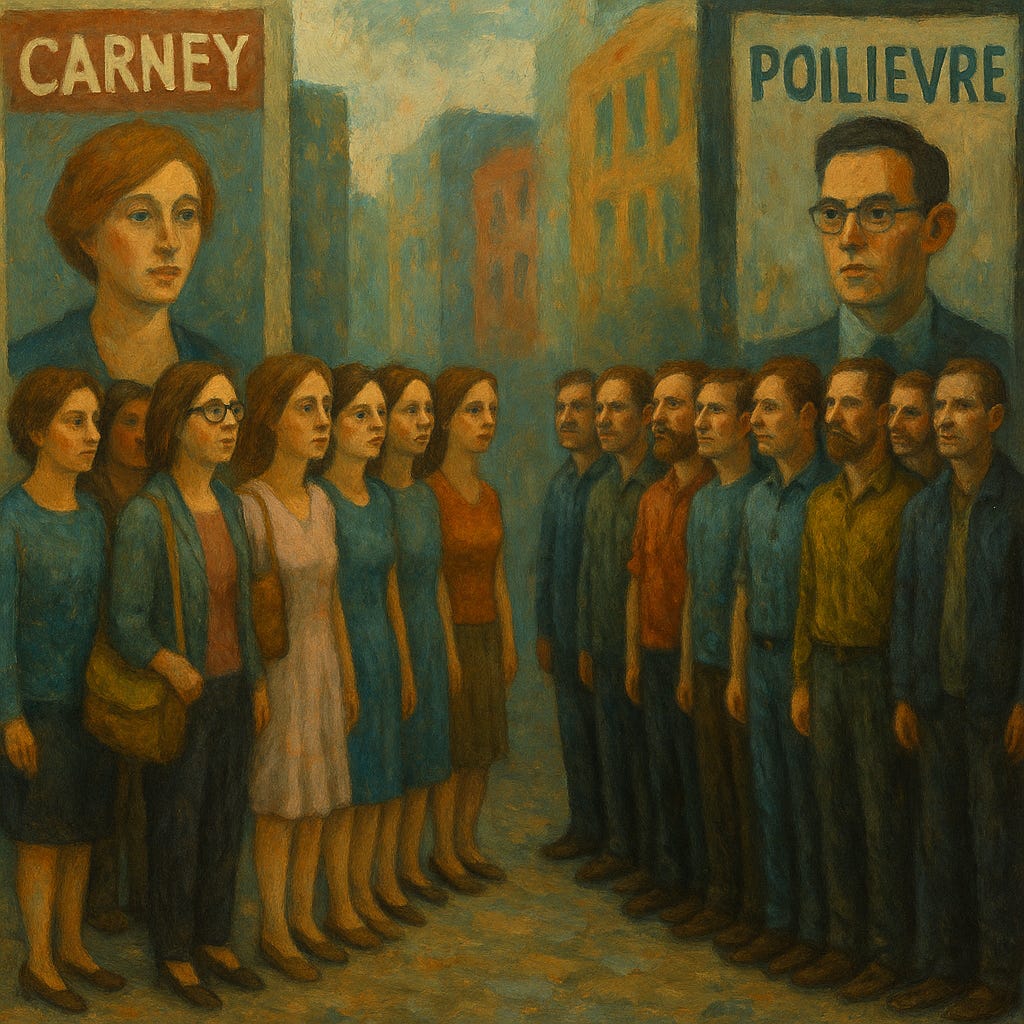
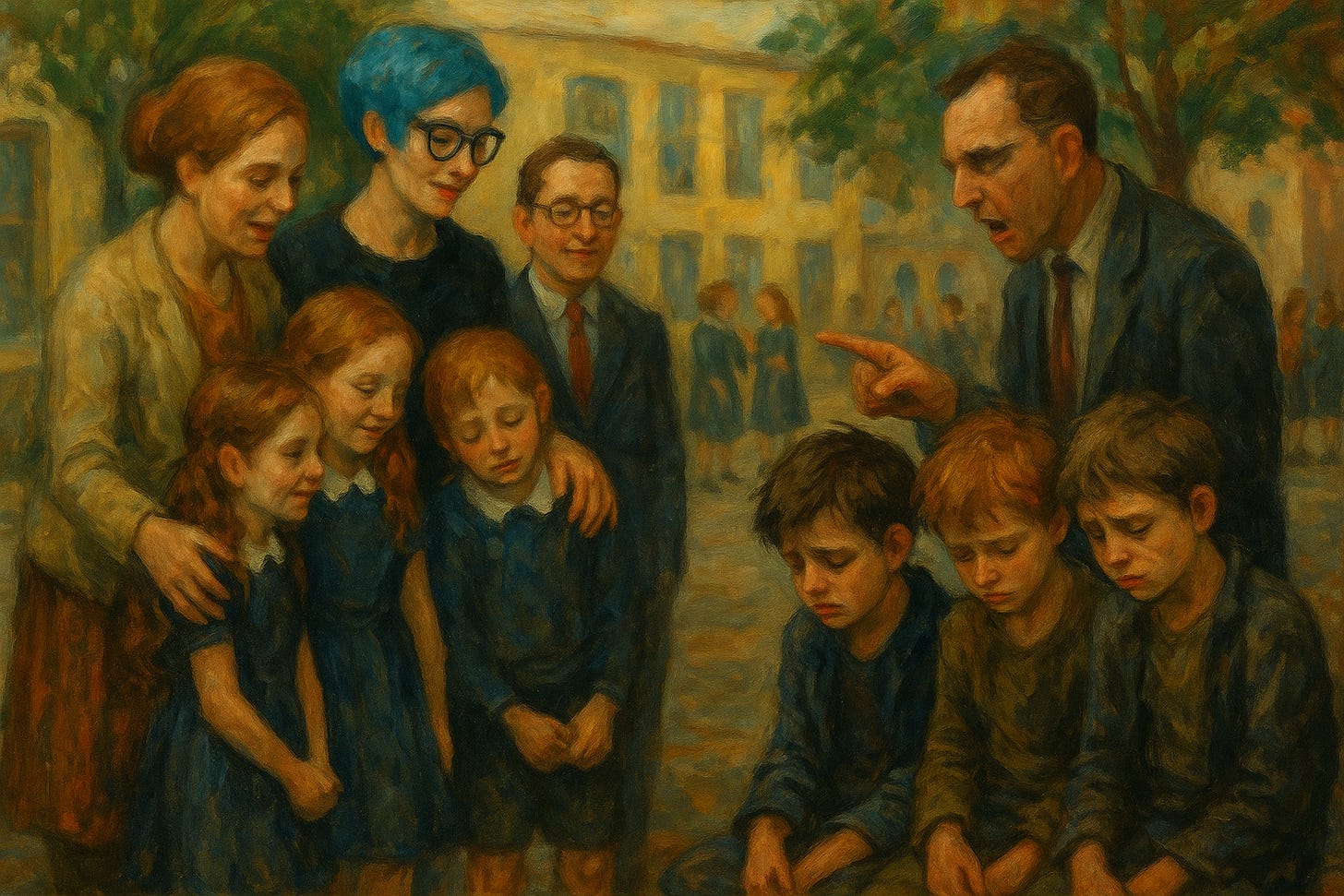
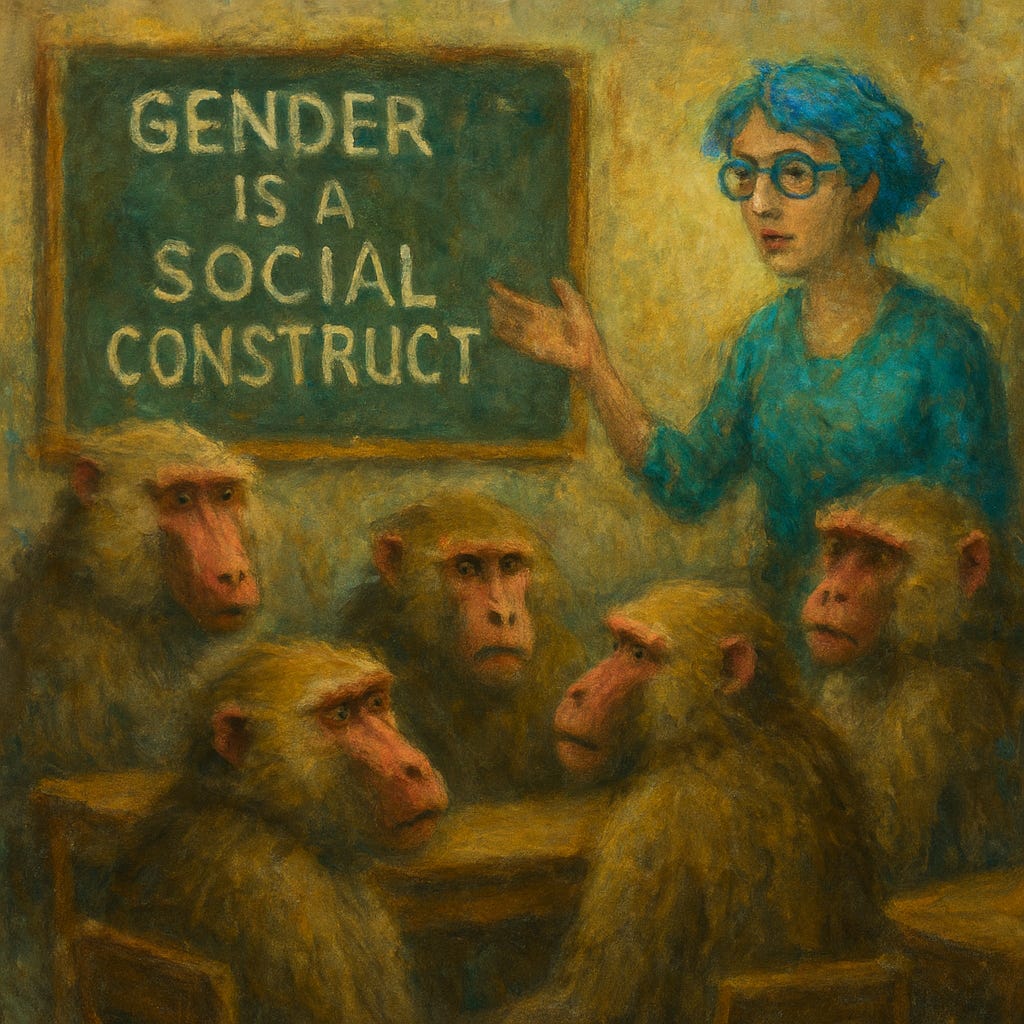
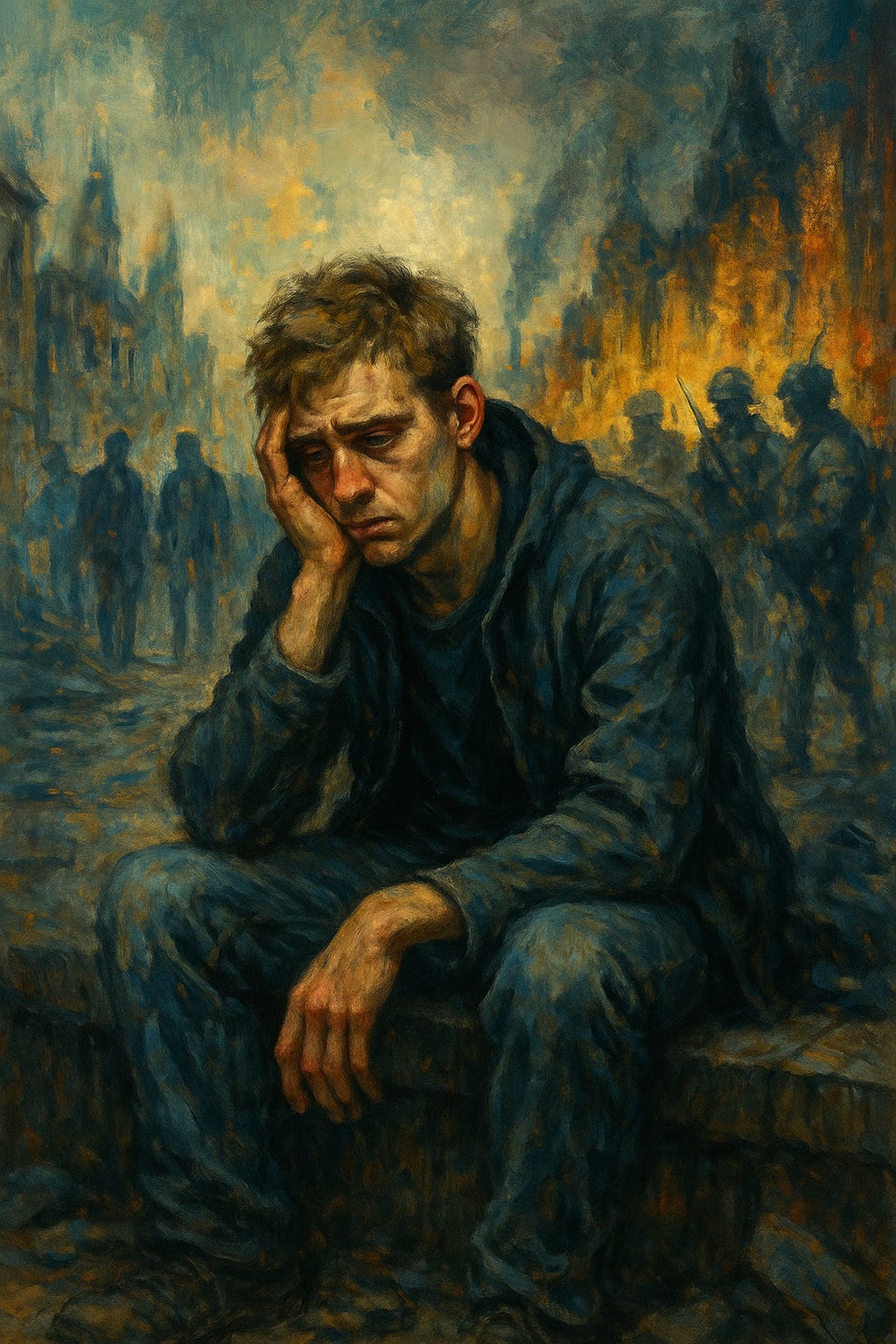
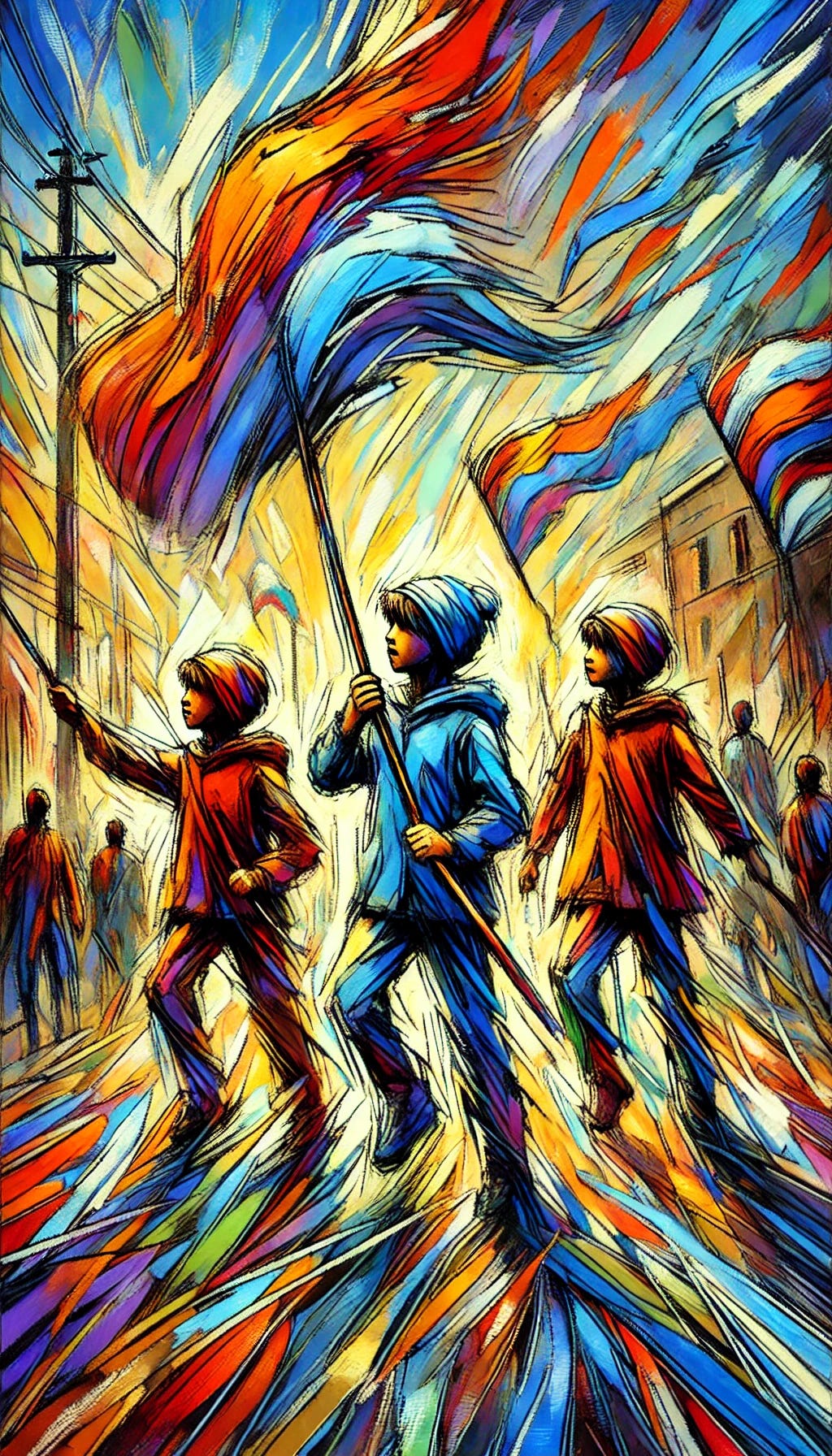
Although not Catholic, I will be forever grateful to the all boys Catholic high school that educated my son. He enrolled, by request, on the tail end of Covid and never looked back. This school, which understands boys, their unique needs and the male psyche, single-handedly saved him from a time of great despair and isolation. We were lucky we had this option; most Canadians are not.